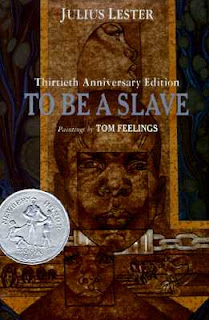The author begins this book by telling how he discovered two bodies of source material - narratives of escaped slaves written by Northern abolitionists in the first half of the 19th century, and interviews with former slaves collected as part of the Federal Writer's Project in the 1930s.
The rest of the book comprises short introductory text by the author (generally a paragraph or two) followed by one or two excerpts from the slave narratives or interviews. The text is loosely organized by topic: the auction block, the plantation, resistance, etc. and grouped further within those topics. This was especially fascinating to read within the context of its publishing date. In 1969 a lot of civil rights progress had been made, but the work was far from done, and the author leaves the reader with a lot of good, pointed questions.
Besides being an amazing resource on the subject matter at hand, this would also be an excellent book to use when talking about sources. There are primary and secondary sources in probably as literal a sense as you're ever going to find in one place. It's also an excellent book to get kids used to the idea of primary sources - I don't think we trust kids enough when it comes to this sort of thing - I don't think I read any primary source historical materials (outside of history textbooks) in the classroom until I was in high school. But here are real voices, talking about slavery, that a 9 or 10 year old could easily read on their own. I encourage it.
My only criticism would be that the author's introductory text sometimes felt a bit jarring as you finished a bit of interview text, and without a real break in the type, would find the matter-of-fact voice of the author. It might work well in a classroom setting, actually, but it was a little odd to my non-grade-school reading sensibilities.
I'd never seen this book until finding a copy for this blog, but it's still in print, and I hope it gets some classroom use. It should.
Friday, January 20, 2012
Subscribe to:
Post Comments (Atom)

No comments:
Post a Comment